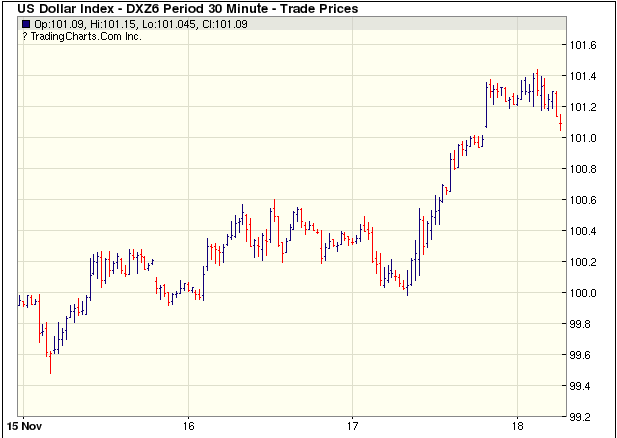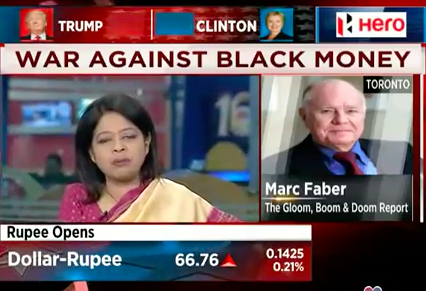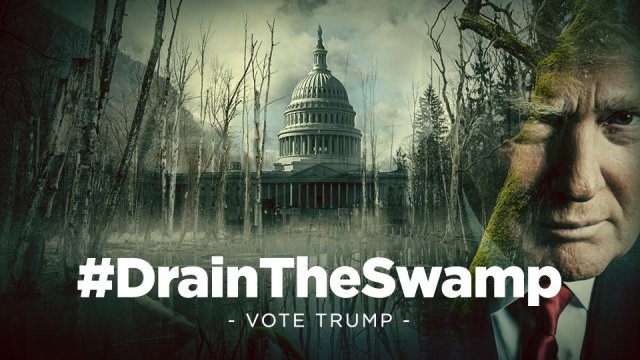Mike's Content
A study says that by 2025 the cost of a robot that does welding will be less than $2 an hour. That’ll keep Union Shop Stewards awake at night. Australia’s Dept. of Industry predicts that 500,000 high skilled jobs like accounting and finance will be replaced by robots and automation! There’s a lot of competition for a job. (Transcript & links below)
 Robots Demand $2 an Hour
Robots Demand $2 an Hour
One subject that can always guarantee some angry emails and usually name-calling along lines of “I’m a moron to suggest that technological substitution has to be considered in so many areas from minimum wage, to government subsidies, healthcare reform and transit. It’s a good bet these people won’t want to consider the impact of technology on the Presidential election, where Donald Trump rode blue-collar job losses to the white house in some key states.
….also from Michael: The Main Investment Theme For the Next Decade
Join Michael for Money Talks every Saturday from 8:30am to 10:00am PST. Listen live on CKNW.com, CHQR.com or via podcast at Moneytalks.net

Anxiety is a thin stream of fear trickling through the mind. If encouraged, it cuts a channel into which all other thoughts are drained. Arthur Somers Roche
2015 was a terrible year for oil and it looked like 2106 would even worse; oil dipped below $30.00 and all cockroaches (oops we mean analysts) started to state $10.00 oil was next. When we heard this nonsense, we penned an article titled will the crude oil price crash become even worse in 2016?
What you need to remember is that the oil market tanked suddenly, and this occurred while the Top Analysts were making calls for higher prices. Hence, just as the oil market collapsed when everybody was proclaiming higher prices, oil will probably stabilise sometime in 2016 as everyone expects it to keep crashing.
In March of 2016, we reiterated our views in this article Mass Psychology predicted crude oil bottom 2016
Notice that the $30.00 price point level has held on a monthly basis. Oil has not closed below this important level on a monthly basis for two months in a row, and this has to be viewed a very bullish development. Our overall view is for crude oil to trend higher with the possibility of trading past the $55.00 ranges. In the face of extreme negativity, oil is reversing, just as it collapsed in the face of Euphoria. A weekly close above 35.00 will set the foundation for oil to trade past the main downtrend line and in doing so send the first signal for a move to the $50 plus ranges.
So what does the future hold in store for oil?
Oil traded as high as $51.34 so we did not fare too shabbily regarding our suggested targets for oil.
Before we continue, it appears less and less likely that oil will trade past $90.00 unless the investment bankers and oil companies collude to boost oil prices artificially. Every few months’ large fields of oil are being discovered; the latest find is in Texas.
One portion of the giant field, known as the Wolfcamp formation, was found to hold 20 billion barrels of oil trapped in four layers of shale beneath West Texas. That is almost three times larger than North Dakota’s Bakken play.
“The fact that this is the largest assessment of continuous oil we have ever done just goes to show that, even in areas that have produced billions of barrels of oil, there is still the potential to find billions more,” Walter Guidroz, coordinator for the geological survey’s energy resources program, said in the statement. : Full Story
Countries such as Saudi Arabia who depend almost entirely on oil are going to be in serious trouble. One positive development from this is Saudi will be forced to engage in less mischief; they are one of the biggest exporters of terrorism, and now that their coffers are running dry they are going to face lean times. These are not our views; an article penned in the New York Times strongly supports this line of thinking
The first American diplomat to serve as envoy to Muslim communities around the world visited 80 countries and concluded that the Saudi influence was destroying tolerant Islamic traditions. “If the Saudis do not cease what they are doing,” the official, Farah Pandith, wrote last year, “there must be diplomatic, cultural and economic consequences.” Full Story
The chart below was the chart was used in the Jan 2016 article which we referred to at the start of this article. $65.00 represents the high-end target or extreme targets.

If you look at the chart, you notice that crude oil traded to almost $52.00 before pulling back, so it came within striking of hitting the targets we issued in Jan of 2016. Oil is holding up remarkably well in the face of strong a dollar; in fact, it started to trend higher as the dollar strengthened. If the dollar should let out a bit of steam, then Oil could quickly surge to the $55.00-60.00 targets before pulling back.

There is a zone of resistance in the $51.80-53.00 ranges that oil was unable to overcome and as long as it does not close below $35.00 on a weekly basis, the outlook will remain bullish. As the trend is still bullish oil still has a pretty good chance of trading to the $55.00-58.00 ranges with a possibility of overshooting towards $65.00 (this is an extreme target and not one we would focus on)
Given that oil was trading below $30.00 when we penned the article in Jan 2106 we are quite satisfied with the way oil followed the projected pathway. As we are now towards the end of the bullish phase caution is warranted; traders looking to play this final move should consider opening positions below $45.00 and once oil trades past 51.50, consider placing tight stops. After oil trades to the suggested targets, we expect oil to pull back to the $45.00 ranges with a possible overshoot to the $39.00-$42.00 ranges.
A person’s fate is their own temper.
Benjamin Disraeli
….related:
“oil will now turn up and further that oil stocks will quite soon break out upside” – Clive Maund’s Oil Market Update

Battered bonds and emerging market currencies enjoyed some respite on Thursday as the dollar took a breather from a post-U.S. election charge that has taken it to a 13-1/2 year high.

The financial market looked set for a quiet start and Europe’s main stock markets were shuffling sideways as the dip in global bond yields cooled bank stocks, which have been rising on hopes higher yields will led to better lending profits.
The dollar dropped a modest 0.1 % against other top world currencies after data showing the biggest increase in U.S. consumer prices in six months.
But the fact it hadn’t quite clawed back yet marked a change of direction after eight days of back-to-back gains that have seen it jump almost 4 %.
“The momentum of the Trump rally (in bond yields and the dollar) has faded a bit so we are all trying to recover,” said Rabobank strategist Philip Marey.
He said investors were mainly trying to get a handle on what U.S. President-elect Donald Trump is likely to do when he takes office in January, as well as position for what now looks almost certain to be a U.S. interest rate rise next month.
Trump was set for meeting with Japanese Prime Minister Shinzo Abe in New York while in her first comments since last week’s election, Federal Reserve chief Janet Yellen said the case for a rate hike has strengthened.
“Such an increase could well become appropriate relatively soon,” Yellen said in remarks due to be given to Washington politicians later.
Japanese yield cap
For bond markets, which have taken the brunt of the Trump trade, the most significant event overnight was the Bank of Japan’s attempt to cap 10-year Japanese government bond yieldsand make good its recent promise to keep them pinned at zero.
That had pushed the yen as low as 109.30 yen per dollar and the Japanese currency was creeping around there again as the first flurries of U.S. trading began.
More broadly, Japan’s efforts will raise questions about how far central banks such as the ECB and others will be willing to tolerate steep and sudden rises in government borrowing costs.
The ECB published the minutes of its recent meeting showing Mario Draghi and his colleagues plan to lay out the next steps for their stimulus program next month.
Speaking in Frankfurt one of the ECB’s policymakers Yves Mersch said: “I believe that (talking about exiting stimulus) is probably still premature, given the fragility of the European growth path.”
The euro added 0.3 % from Wednesday to stand at $1.0722 after setting an 11-month low of $1.0666 overnight.
Germany’s benchmark 10-year Bund yield fell as much as 5 basis points to 0.26 %, moving away from a peak of 0.396 % hit on Monday—the highest level since late January. Other euro zone yields were 2-5 bps lower on the day.
“The BOJ’s move shows that there is a bit more of an effort to cap yields and, knowing that, other bond markets can be more stable from here,” said Mizuho strategist Peter Chatwell.
Mexico hike
The rout in U.S. bond prices also halted, with Treasury yields pulling back to 2.15 % only to inch upwards again back towards an 11-month high above 2.3 % hit earlier in the week.
It came as crude oil prices kicked higher as Saudi Energy Minister Khalid al-Falih said he was optimistic that OPEC would formalize a preliminary output freeze deal reached in Algeria back in September.
Brent crude jumped 80 cents to 47.40 a barrel and U.S. light crude was up 75 cents at $46.32.
Gold nudged up slightly as the dollar consolidated. Spot gold inched up 0.2 % to $1,228 an ounce, moving further away from the five-month low of $1,211.08 set on Monday.
Gold had still lost roughly $100 an ounce from last Wednesday’s post-U.S. election high on the back of the sharp rise in bond yields and burgeoning appetite for risk.
Emerging markets, also battered by the jump in the dollar and borrowing costs and the prospect of a major shake-up in trade deals under Donald Trump, remained on edge.
The Malaysian ringgit hit a 10-month low on increasing fears that authorities could introduce capital controls, while Mexico’s peso inched away from recent all-time lows ahead of what was expected to be an interest rate hike later.
“The central bank needs to send a strong message,” said Carlos Serrano, an economist at BBVA Bancomer, who was expecting a 75-basis-point hike.
….also:

Marc Faber, Author, The Gloom, Boom & Doom Report is most interested in investing for 5 to 10 years states that he prefers investing in India rather than investing in the US. He would also invest in other emerging economies and Europe as well as he thinks the US is an “over-valued over-promoted market”. Marc take on Indiia’s clampdown on “Black Money”


 America voted to return to its foundations as a constitutional republic instead of continuing on the path towards a corrupting welfare state. On their compulsive drive, the governing classes had become, well, ungovernable.
America voted to return to its foundations as a constitutional republic instead of continuing on the path towards a corrupting welfare state. On their compulsive drive, the governing classes had become, well, ungovernable.
On Independence Day weekend, this writer published an article that rhetorically asked if the “American Spring” would be successful? The answer in rural talk was “You bet!”. Trump, the Republicans and the “deplorables” will indeed drain the swamp in early stages in another great reformation.
For many, the election was a shock followed by distress. This shows up in street riots and counselling sessions. Get over it, equally intense angst took to the streets with the transition from Carter to Reagan.
For beleaguered taxpayers, results signal relief from increasingly expensive and wasteful bureaucracy. High-fives all around. Hoist a beer and work with the reform.
In the last few years the thrust of state ambition became intrusive enough to arouse a popular uprising. Dating back to dynastic changes in Ancient Egypt, there is a long history of the public being provoked enough to reform predatory government.
The uprising in Czechoslovakia in 1989 was successful and attributed to the “power of the powerless”. The “Prague Spring” of 1968 was brutally quelled by tanks and machine guns.
For hundreds of years, neurotic intellectuals have scorned ordinary citizens as “bourgeoisie”. Hillary Clinton’s contempt was focused upon the “deplorables”.
The moment of success for an uprising occurs when state operatives lose the will to impose authority. At virtually the same time, submission loses its complacency.
Professional activists disrupted GOP meetings during the election and it was worth making the comparison to riots in Europe in the early 1930s. Those were violent streetclashes between international socialists and national socialists. Both were professionals and both sides were rioting for authoritarian government. Uninvolved citizens remained quiet.
Recent disruptions in American streets have had only one party clamouring for intrusive government.
While unremarked by legions of journalists, there has been an important distinction. Despite being burdened by the establishment’s intrusions, the general public remained silent and stayed home. With contempt, Dems abused them; too many in the GOP ignored them.
Suddenly, the uninvolved became involved.
The results are profound, irrevocable and quite likely long lasting.
Just how profound is that it was not just another struggle between two parties contesting the middle ground. The combination of the apparatus of government, the MSM and the Democratic Party had become a monolithic political force with seemingly infinite power.
Political Correctness has become one of the most formidable forces in history. Its remarkable success does not depend upon winning arguments, but in relentlessly attacking anything contrary to the notion de jour. Since the late 1960s, it’s been Global Cooling, Fluoridation, Alar on Apples, Acid Rain, Ozone Holes, GMOs, Global Warming and Climate Change, just to list the most compelling anxieties. Thoughtful folk are grateful that activists seem unable to get excited about all of the threats at the same time.
And, no matter the issue, the dogma is always settled.
Now for the irrevocable part.
The recent great experiment in authoritarian government has run for more than a hundred years. Each country ran its experiment in its own way. Some countries became murderous police states, some were constrained to mere envy, but most did not turn murderous.
In what seems a long time ago, Americans celebrated individual responsibility and limited government. But inspired by Obama, the long-running trend of intrusion went ballistic. In providing credit without limit, the central bank also went ballistic. Such extremes have provoked informed and legitimate opposition.
This uprising compares to the early 1600s, when the last great authoritarian experiment ran to political and economic distress. The burden of the ambitious combination of church and state became too much for the average household. England’s reformation was much less violent than Europe’s, and hopefully provides guidance for today. The “Glorious Revolution” of 1688 was bloodless and the highlight of the transition from absolutist monarchy to limited government.
The subsequent trend towards increasing freedom was described as liberalism and ran until the 1890s. Even if a researcher then had known the characteristics of the two previous great experiments in authoritarian government, it would have been impossible to predict another one. Fortunately, there has been two examples of ending action to provide guidance. The first one was the collapse of Rome.
Quite simply, undisciplined bureaucrats intrude until the money is gone.
Over the decades, intrusion has had many compelling political banners. Fascism, which is the combination of big business and big government, Communism, Socialism, Globalism and sadly a corrupted Liberalism. Not to overlook the remarkable persuasions of the Global Warming/Climate Change movement. Anyone who criticizes the compulsion of the day is often called a Nazi. All the banners represent arbitrary intrusion and clearly a universal definition of authoritarian ambition is needed.
“That which is not compulsory is prohibited.”
Which covers everything from Communist dictatorships to school boards.
Authority happened everywhere and the belligerence of the Obama/Clinton administration finally aroused an uprising that is now impressive. This is shocking to the establishment, which ironically, has suddenly become the reactionary force.
More recent political history could also provide guidance.
In the early 1980s, a popular uprising began in Europe and eventually took out totalitarian governments. The West enjoyed reform as well.
President Reagan won the White House, but was opposed by the Democratic House and Senate. More reform was prevented than accomplished.
In 1984, Canadian conservatives were revved up for change. This gave Prime Minister Mulroney the biggest landslide in history. In a parliamentary system the majority party has a lot of power. Unfortunately, even by the 1988 election the party did not understand the popular demand for reform. Some privatization was accomplished, but much of the potential for reform went unrealized.
In England, Prime Minister Thatcher’s majority was understood and accomplished massive reform towards more limited government. The greatest such success since 1688.
Brexit is a reform movement away from excessive and remote government. In 1776, Americans had similar issues.
Donald Trump will take office with the strongest Republican position since 1928. This includes 33 state governorships. What about continued activism by monolithic media?
The blunder by main stream media is finally being recognized and criticized. Some reporters could reform, but too many will not quit promoting intrusive bureaucracy.
In the late 1500s, England’s government enjoyed almost full control of the media, both in print and in the pulpit. But during the popular uprising of the early 1600s, Archbishop Laud at the notorious Star Chamber complained about losing control to the new middle class media. Because of establishment censorship, independent information was published as “newsbooks” in Amsterdam. And then distributed to discerning readers in England.
Some of the financial details of that period are fascinating.
As usual, a long expansion ended in a boom. Then the contraction with growing unemployment forced the desperate government to an experimental “make work” program. In real time, London merchants ridiculed the scheme in calling it “Tyrannical Duncery”. The severe financial collapse that began in 1618 validated the description. Intrusion worsened the financial calamity.
History records as many failures as there are theories of intervention. The last twenty years of policymaking has been providing another prime example of Tyrannical Duncery.
Lately, business is burdened by rules and regulation, which inhibits growth. Academic economists arbitrarily decide that GDP growth is too weak. Central bankers recklessly boost credit hoping it will “grow” the economy. The net result has been a weak expansion. But excess credit has bubbled up in reckless speculation in tangible and financial assets that is becoming unsustainable.
With a degree in geophysics, this writer has described the ambition to “manage” the climate as the most audacious boast in the long history of bureaucracy. Traditionally, wise priesthoods have only interceded with gods, not acted as if they were gods.
Understandably, the state has championed only economic and climate theories that serve its drive for power and wealth. Such corruption will become more widely understood. IPCC’s mandate was to investigate anthropogenic warming via CO2 and nothing else. One-dimensional research on a three-dimensional subject.
The electorate’s discovery of the modern equivalent of “Duncery” and the conviction to say “No!” is a start. Eventually, it will reform in-your-face and in-your-wallet governments.
Perhaps the movement really is becoming the “American Spring”. Opposing tantrums will be ineffective. The unprecedented union of state and media has had a serious setback. Generally, media could reacquire self-criticism as well as its former responsibility as the “Fourth Estate”.
As with so many historical examples, the uprising is the vehicle of reform. Trump just happens to be the leader, and personally he is more of a threat to good taste than to good order. Bureaucracy unconstrained by constitutional norms has always been the greatest danger.
You can wager on this.
Bob Hoye, Institutional Advisors – WEBSITE: www.institutionaladvisors.com
….also:
This Week In Geopolitics: Russia, the United States, and Donald Trump












